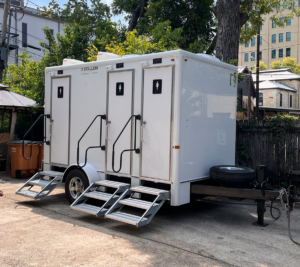Liquid Waste Removal Perth involves the treatment, transport, recycling, and disposal of liquid wastes. This waste type can be toxic or hazardous and must be managed carefully to prevent contamination.
First, it’s important to separate non-hazardous and hazardous waste from each other. Then you need to find a safe place to store it.

Methods of disposal
Most liquid waste is not hazardous, but it should be properly disposed of to avoid potential harm to humans and the environment. The type of disposal method depends on the substance’s composition, as well as its potential impact on water supplies and other natural habitats. It’s also essential to take into account the local regulations when choosing a disposal method.
Liquid waste disposal methods include land application, incineration, sewage treatment and recycling. If you’re unsure of how to dispose of your liquid waste, consider calling in an expert to ensure that you comply with the law and avoid any environmental contamination.
The first step in determining the best way to dispose of liquid waste is to analyze it with an independent waste analysis company. This will give you the information you need to determine its composition, as well as its level of toxicity and hazardousness. You’ll need to know this in order to classify it correctly and allocate the correct waste code.
Most liquid waste is disposed of in landfills, but this is not the most environmentally friendly option. This method could potentially lead to groundwater and surface water contamination. It’s also important to keep in mind that landfills will eventually fill up, and there is a risk of toxic waste seeping out into the soil.
A better option is to use a liquid waste transfer station, which is equipped with specialized containers for different types of liquid waste. This will allow you to separate non-hazardous and hazardous waste, and ensure that your waste is disposed of in compliance with all regulations.
Alternatively, you can use the sedimentation technique to separate the solid contaminants from the liquid waste. This involves mixing the waste with a chemical that causes it to settle, leaving behind the solid waste and the sludge-like liquid waste. The sludge-like byproduct can be used for various purposes, including as fertiliser.
Another option is to use a disinfection process to destroy harmful pathogens in the liquid waste. This process may involve chlorine, ultraviolet (UV) or ozonation. Finally, you can use the deep-well injection technique to dispose of your liquid waste in underground wells. This method is suitable for certain kinds of liquid waste, but you must be careful not to use it too close to water sources, as this can lead to contaminated runoff that may contaminate groundwater and surface water.
Sedimentation
Sedimentation is a water treatment method that separates smaller particles from the rest of the water. This process is important because it reduces the amount of suspended solids in the water, which helps prevent contamination and improves the overall quality of the water. Sedimentation is also a cost-effective solution, compared to other water treatment methods. However, there are some challenges associated with this method. For example, it can be difficult to maintain an ideal turbidity level in sedimentation tanks. In addition, sedimentation tanks can easily become clogged with debris, which can lead to increased costs and downtime. To avoid these problems, it is important to use a sedimentation tank that has a high flow capacity and can handle large volumes of wastewater.
Another benefit of sedimentation is its ability to reduce the number of microorganisms in wastewater. This is important because many of these organisms are harmful to humans and can cause diseases, such as diarrhea and infectious hepatitis. In addition, sedimentation can help remove nitrates from wastewater, which is an important factor for reducing water pollution.
In general, sedimentation works by allowing heavier particles to fall out of suspension under the force of gravity. These particles are known as sediment or sludge. This process can be accelerated by using chemical coagulants, which neutralize the surface charge of turbidity particles and attract them to one another. This process is typically used to remove turbidity from drinking water, but it can also be used to remove protozoan cysts and helminth ova from sewage.
This method is especially useful for liquid wastes, such as sanitary sewage. This type of sewage contains human waste and wash water from toilets, sinks, and laundry. It can contain a variety of organic and inorganic contaminants, including bacteria, viruses, and parasites. Sedimentation can be a very effective way to remove these contaminants, as it provides a safer and more hygienic alternative to traditional burial.
Sedimentation is a physical-chemical treatment process that begins with coagulation and flocculation. The coagulated water then overflows a weir into a flocculation tank, where it is mixed with a polymer and a small quantity of ballast material, usually fine sand or Bentonite. The sand increases the density of the floc, which makes it settle faster than unballasted sludge.
Incineration
Incineration is an effective method for destroying liquid wastes that cannot be transported or stored in landfills. The process exposes the waste to high temperatures that destroy pathogens and toxic contamination. This reduces the amount of waste that needs to be disposed of in landfills, thereby reducing environmental impact and cost. It also reduces the need to use energy to transport and store the waste. This approach is especially beneficial for highly contaminated wastes, such as medical waste.
The cost of incineration varies by region and type of waste. For example, medical waste requires specialized treatment, and the disposal process for this type of waste is more expensive than other types of waste. In addition, the disposal of hazardous wastes often requires expensive equipment and a permit from the local government.
Another factor that influences the cost of incineration is the availability of land. The soil formation and stability of the disposal site should be stable enough to prevent shifting and leaks. In addition, the site must be accessible to trucks and other vehicles that need to transport the waste.
If the soil conditions are not favorable for incineration, it may be necessary to use an alternative method of liquid waste removal. For example, if the area is located in an area with poor drainage, it may be necessary to pump the waste to a separate landfill location. The cost of this additional step can increase the overall cost of incineration.
Liquid waste incineration plants are becoming more popular because they help to reduce the amount of garbage that goes into landfills. In addition, they reduce greenhouse gas emissions by converting waste into usable energy. However, they are still more expensive than landfills. Moreover, the costs associated with operating and maintaining these facilities are a major barrier to widespread adoption of the technology.
In the United States, there are several different technologies for incinerating liquid waste. These include mass burn facilities, modular systems and refuse derived fuel systems. The waste used to power these plants is typically sorted on the front end to save recyclable materials. Some advanced incinerators have heat-recovery boilers that capture waste energy for reuse in the combustion process.
Geotextile bagging
Geotextile bagging is a cost-effective and environmentally safe method of handling liquid wastes. It involves placing wastewater sludge material into large bags that allow water and other liquids to escape while containing the solid materials in the bag. This process requires no machinery or other expensive equipment and can be done by hand. This makes it an excellent alternative to sludge disposal by land application or landfilling. In addition, it has the added benefit of protecting waterfront properties from erosion.
Geobags are used by many small municipal wastewater treatment plants to dewater their liquid digested sludge, reducing hauling costs and helping maintain plant budgets. This technique also allows the facility to reduce energy costs by storing the sludge in the bags until it is ready for land applications. It is also useful in mining applications, industrial lagoons, and sedimentation ponds.
In this study, backwash flows of intensive recirculating aquaculture systems were captured and dewatered in simple geotextile bag filters. The biosolids were amended with polymer plus alum, ferric chloride, or hydrated lime to evaluate how coagulant choice impacts nutrient and carbonaceous biochemical oxygen demand (cBOD5) leaching from the filtered effluent and the final composition of bag-captured biosolids.
Alum-treated biosolids showed the highest removal of total suspended solids (TSS), followed by lime and ferric chloride. In contrast, adsorption of organic acids and cBOD5 were significantly higher in the hydrated lime and ferric chloride treatments. This indicates that adsorption of organic acids is critical for effective treatment and degradation of dissolved nutrients in geotextile bag filters.
As a result, a simple and economical geotextile bag filter may be able to effectively bind dissolved phosphorus in aquaculture sludge for disposal by land application or composting. However, the alum and hydration treatments did not prevent the mineralization of DRP within the bag filter. As a result, a significant amount of phosphorus was released into the filter filtrate.
A newer and more advanced technology is the use of a dewatering tower, which allows the bag to be lifted and pushed by gravity to create an air-filled space at the bottom of the bag. The air-filled space forces the sludge to expand, and it is squeezed out of the bottom of the bag, producing a much drier cake in less time than traditional methods.




